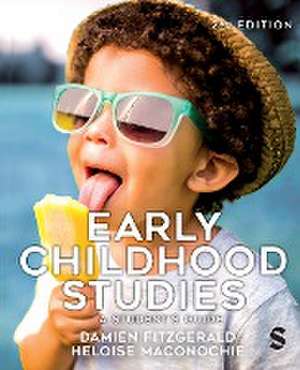Early Childhood Studies
Editat de Damien Fitzgerald, Heloise Maconochieen Limba Engleză Paperback – 27 ian 2024
| Toate formatele și edițiile | Preț | Express |
|---|---|---|
| Paperback (1) | 255.33 lei 3-5 săpt. | +31.89 lei 6-10 zile |
| SAGE Publications Ltd – 27 ian 2024 | 255.33 lei 3-5 săpt. | +31.89 lei 6-10 zile |
| Hardback (1) | 739.45 lei 6-8 săpt. | |
| SAGE Publications Ltd – 27 ian 2024 | 739.45 lei 6-8 săpt. |
Preț: 255.33 lei
Nou
Puncte Express: 383
Preț estimativ în valută:
48.86€ • 50.48$ • 40.64£
48.86€ • 50.48$ • 40.64£
Carte disponibilă
Livrare economică 26 februarie-12 martie
Livrare express 11-15 februarie pentru 41.88 lei
Preluare comenzi: 021 569.72.76
Specificații
ISBN-13: 9781529794892
ISBN-10: 1529794897
Pagini: 424
Dimensiuni: 191 x 235 x 23 mm
Greutate: 0.73 kg
Ediția:2. Auflage
Editura: SAGE Publications Ltd
ISBN-10: 1529794897
Pagini: 424
Dimensiuni: 191 x 235 x 23 mm
Greutate: 0.73 kg
Ediția:2. Auflage
Editura: SAGE Publications Ltd
